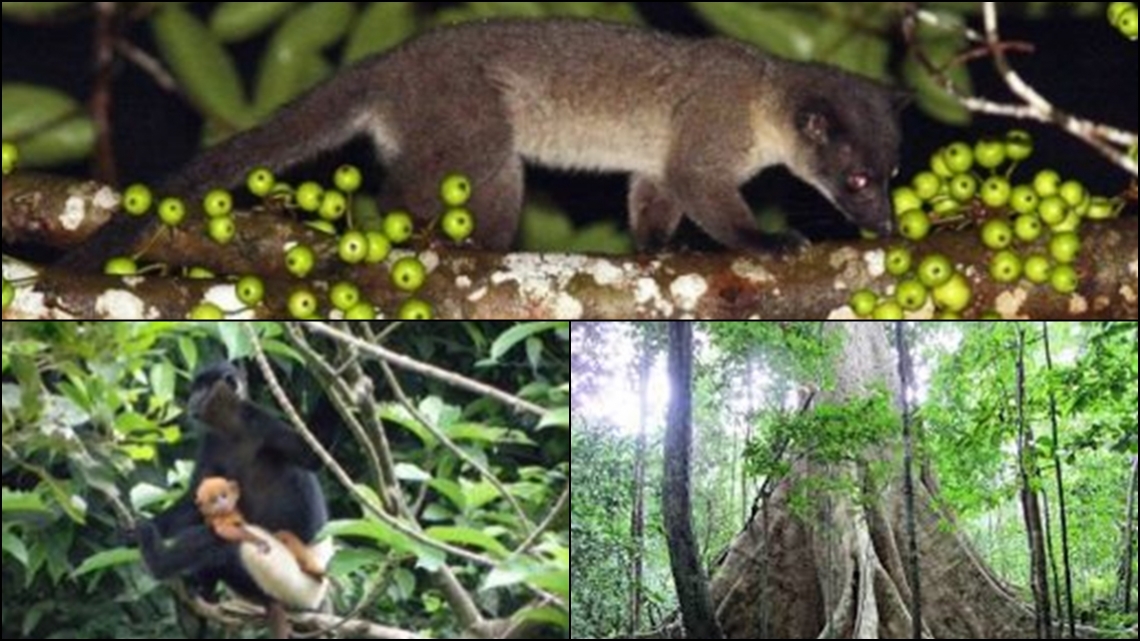This is probably the best site in Vietnam for seeing wildlife .It consists of two sectors : Cat Loc and Cat Tien, each about 35,000 ha and harbours the last remaining sizeable lowland forest in southern Vietnam comprising of a wide variety of habitats (primary and secondary).There are Diperocarpacae dominated tropical evergreen lowland forest, semi - evergreen lowland forest dominated by Lagerstroemia , bamboo and open grassland ,seasonal floodplains , flooded forest. While Cat Loc features the only few remaining individuals of Javan rhinos outside Java, Cat Tien is easy to access with good facilities and trail networks for wildlife watching. Bird watching (more than 300 recorded species) is best on the main road through the park to HQ to Dak Lua as well as forest trail heading off the road such as the Lagerstroemia, Crocodile Lake and Ecological Trails. At Crocodile Lake ( Bau Sau) , the ranger’s watchtower is like a tree house overlooking the rising mist. The forest walk to the lake passes through a volcanic rockfield with undisturbed lowland evergreen rainforest with strangling figs and giant trees with buttresses reaching beyond your head. To watch the park’s nocturnals animals hire a vehicle after dusk and drive with a spotlight southward following to the main road.Sambar Der, Barking Deer, Wild Pigs, Porcupines, and Common Palm Civets are commonly seen.Check out the beautiful well the paintings of Cat Tien’s ecosystem in the room next to the tourist reception .
Tips to find key species :
mese crocodile : Reintroduced in 2000, easily seen by renting and spot lighting at night on Bau Sau lake from the ranger station .Gaurs : easily to found at down dusk in the grassland just northeast of the ranger station at Bau Sau lake or from the watch town in grassland at Bird’s lake Bau Chim .Black–shanked douc Langurs : easily morning or afternoon after 4 p.m. in high trees before the Bau Sau trail junction on the western side of the road to Dak Lua. Buff–cheeked Gibbons : sometime heard from the HQ calling dawn . To see them listen to their from the Lagerstoemia trail after the ‘Big’ tree and followtheir calls into the hilly area northeast of the trail . Green Peafowls : often crossing the road in the Nui Tong grassland 3km south of the HQ follow the main road south, the grassland starts on your right beyond the acacia plantation and Nui tong hill . Woodly–necked Storks : on dead tree on the left (southern) side of the main road just after the road takes a 90 degree left turn. Blue–rumped Pittas : on the Lagerstoemia trail that start from the Dak Lua road just before the ‘Cu repids’ ranger station .Turn left at the ‘Big’ Lagerstoemia tree toward the ‘Big’ Tetramelis tree to watch out for Bar–bellied Pittas hopping on the ground. Blue–winged Pittas : seen in the Acacia Plantation just south of the HQ , in secondary forest the river bank behind accommodation block C, a following a trail just behind the headquarters that links up eventually with the Lagerstoemia trail. Black & red, Banded and Dusky broadbills : in forest along the main road to Dak Lua.
Facilities: Accommodation, eating and leisure facilities available around the HQ.
When to go : Best in the dry season between November to June.




